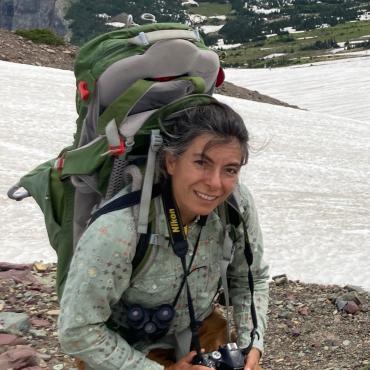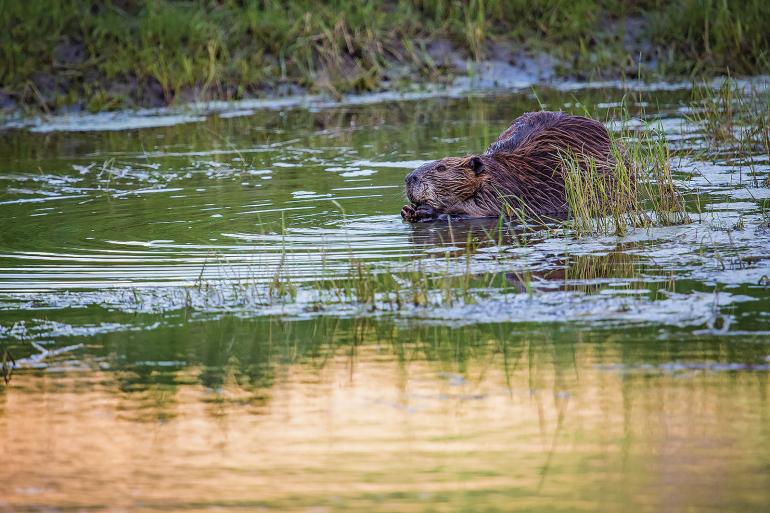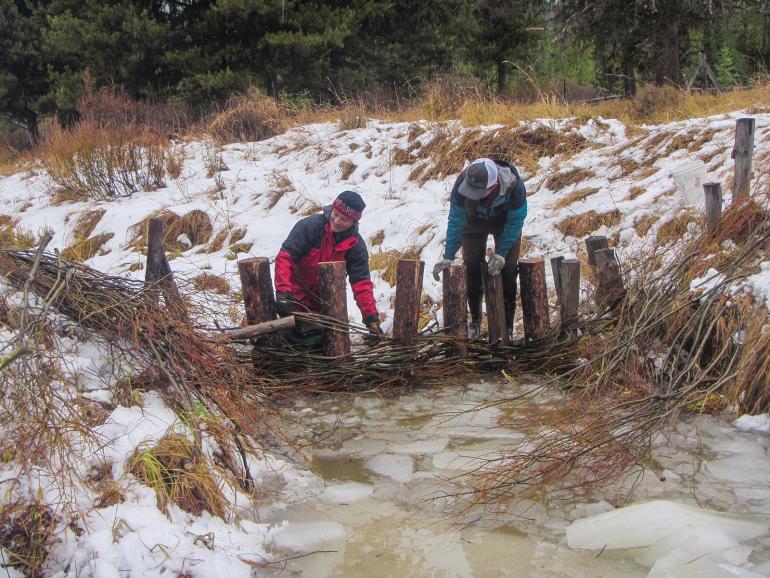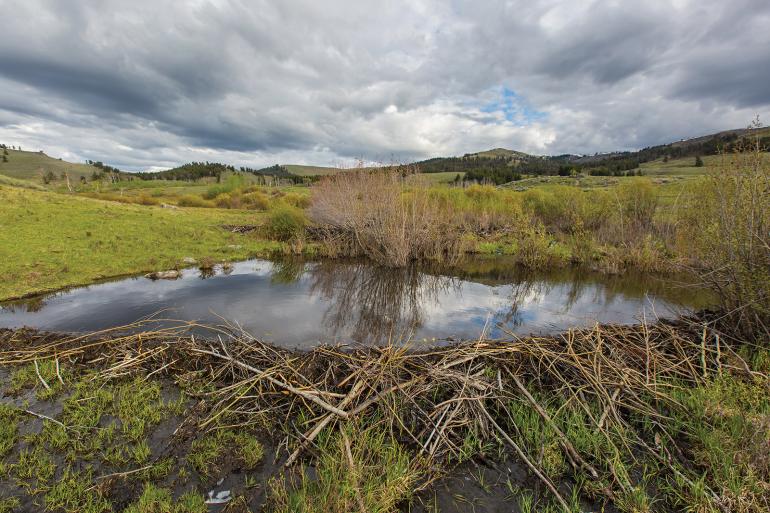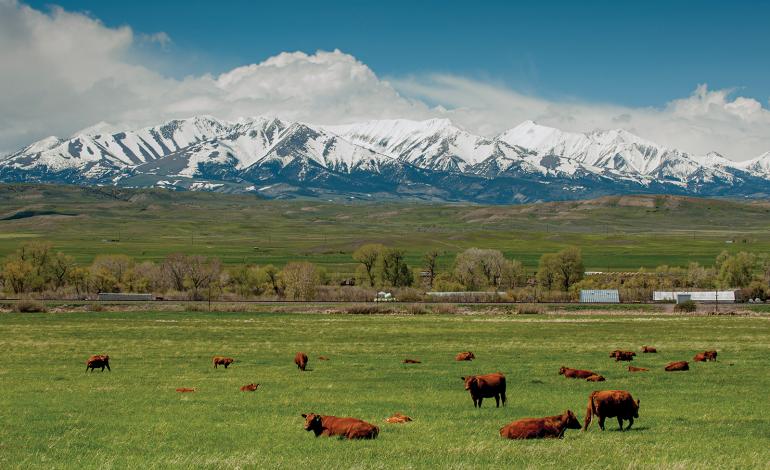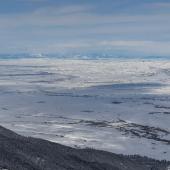The River Below
Thomas Elpel on the future of water in the West.
The West is obsessed with its rivers, especially as the climate warms. From alpine creek to blue-ribbon stream, communities count on watersheds to support historic levels of agriculture and sustain economies while nurturing vast ecologies. As drought defies our attempts to manage water supply, we can’t rely on rain. How will we keep more water in the river? According to sustainability advocate Thomas Elpel, we must focus on the land beyond the banks. “The river is the water table,” Elpel says at his wilderness survival camp near Whitehall. “Every pond, slough, and backwater along the Jefferson rises and falls in tandem with the river. If the water table drops low enough, the river drops below ground. If we want more water in the river, we need to raise the water table.”
Land is a mantle of skin that stores water. It sops up what it can, where it can. If we want to moderate cycles of flood and drought, we need to look at natural systems more holistically
A botanist, author, and educator, Elpel paddled down the Missouri River for five months in a dugout canoe that he made himself. He can recite the journals of Lewis and Clark while whisking up fireside ash cakes, and he has logged untold watershed miles, by canoe and by foot, while contemplating the complexities of land use. Sift through his proficiencies in western ecology and stewardship, and what falls out is a study on water scarcity—how to boost streamflows by working with natural systems, and why we need to do it. Now.
Overallocated.
Anywhere peaks, pastures, and people shadow rivers, life revolves around the water. When streamflow plummets, debate over water use heats up. In southwest Montana, hot weeks with little rain fan panic at the height of irrigation season. Voices clamor for compromise and fixate on the shortfall in the river. With every summer shortage, one monumental barrier—the prior-appropriation system of water rights—arises as the wall to hang a hat on or bang a head against. Basins across the West are overallocated: irrigators own rights to more water than the land ever had to give.
Streamflow has suffered as a consequence. Expansive diversion has decimated hallmark riparian species of cold, clear flow. The Jefferson River, for example, once supported millions of western pearlshell mussels, Elpel says. Those shells still spangle the warming, mossy streambed, but live mussels on the dewatered river are rare.
“Overallocation is a huge issue,” Elpel explains. “We’ve diverted the Jefferson to grow alfalfa fields. From a wildlife standpoint, we’re trading fish for deer.” But the issue extends beyond the waterways. Land is a mantle of skin that stores water. It sops up what it can, where it can. If we want to moderate cycles of flood and drought, we need to look at natural systems more holistically, he says, and learn to bank water in the soil. “Land management determines how much water soaks into the soil versus how much flushes downriver with the spring runoff,” he says. “Beavers are the obvious water engineers, but overall vegetative cover is key to banking water in the soil, and even livestock can help capture water in the soil.”
Putting Beavers to Work
“The river has to move,” Elpel says. “Historically, it has. A lot.”
Before dams impounded mainstem flows, a river would carve bends, steadily cutting into an outside bank while depositing a wake of cottonwood seeds along the inside, sowing bands of progressively younger trees. If the river doesn’t move, the trees can’t reproduce. Cottonwood trees stabilize banks, slow runoff, moderate water temperature, and capture nutrients that feed insects, then fish. But their seeds need muddy strands a safe distance from the streambed, Elpel explains, to germinate beyond the grind of winter ice floes that tear sprouts from near banks.
It turns out that beavers, whose populations were decimated by the fur trade, are really good at doing what we need now: restoring groundwater and re-connecting floodplains.
Along the upper and lower Jefferson, groves of aging cottonwoods shade banks where the river once swept through its floodplain like a serpent, leaving behind a trail of of oxbow ponds, sloughs, and cattail swamps. In recent times, riprap, flood-control berms, and pinch points like bridges have funneled flow and confined the river. Lush bends deprived of water increasingly resemble canyon walls as flagging cottonwoods age and there are no younger trees to replace them. “We’re killing the river with riprap,” Elpel says.
In addition to reducing old-growth cottonwoods, we’ve impaired the function of another critical species: beavers. These lush-pelted rodents thrive on intact floodplains and the associated bounty of cottonwoods and wetland refuges. And it turns out that beavers, whose populations were decimated by the fur trade, are really good at doing what we need now: restoring groundwater and re-connecting floodplains. The leaky layout of a beaver dam slows the movement of water downstream, capturing sediment and raising the water table and the riverbed over time, Elpel says.
In a 1913 book by Enos Mills, the noted naturalist describes an old beaver dam near Three Forks, 2,140 feet long, 23 feet wide at the base, and 14 feet high. While riparian habitat along the Jefferson has dwindled, even modest dams can have outsized impacts on the water table, Elpel says. In a fleet of small dams on a slender stream, each structure raises the water table a few inches or a few feet, fanning water wide beneath the soil. But many streams that once supported countless dams have lost their beavers.
In light of our beaver shortfall, human crews build beaver dam analogs (BDAs) on degraded streams by pounding posts between banks and wedging branches through the supports to mimic the function of a natural dam. BDAs retain runoff—water pools and drops its sediment; the sediment base rises, the creek swells, the banks flood. But the real benefit may accrue in the subsoil.
“They raise the water in the creek,” Elpel says. “But they’re also raising it in the ground and holding it there.” These structures hold water longer into the summer, when the land can release groundwater slowly back to a stream as streamflow begins to drop. “There is a certain amount of absurdity going on here,” Elpel points out. “We trapped out all the beavers. Now we have people trying to do the work of the beavers.” He prods these human contraptions with questions: Will the beavers adopt and maintain the BDAs? How long will it take to raise sediment to a level where a channel spreads across its valley? These are questions we need to be asking, and so long as the beaver-mimicking structures remain on the landscape, Elpel will continue to scrutinize them.
Grazed to Death
We need to pay attention to soil cover” Elpel says. “Just like beavers grow their own trees by raising the water table, bison grew their own grass.” Massive buffalo herds grazed historic western rangelands, pounding seeds into the soil and rototilling organic litter en masse. Unfortunately, cattle don’t occupy the same niche. Massive herds of native grazers forged the frontier grasslands—trampling and mulching seeds, fertilizing the ground with dung, then abandoning the plot for fresh forage. The grassland rested, then regenerated. Western grazing systems, however, failed to replicate this interplay. Grass grew more sparsely, or it stopped growing.
With successive summer scorchers, water shortages telescope to crisis. Communities fixate on the river as the pipelines fails to pipe enough.
“People think of grazing in terms of the eating component. But trampling is more important,” Elpel says. “Cows are not on the land in dense enough numbers to trample the old bunchgrass. They’re overgrazing and under-trampling.” Elpel says precipitation holds sway, too. “In European and eastern North American systems, grazing animals cropped grass and the grass got shorter. But it didn’t die. These are places that have regular moisture.” Not so in the West’s water-starved environments, explains Elpel, that can’t support nearly as much grazing as ecosystems that receive more regular precipitation. “Inconsistent moisture is a different system,” Elpel says. “People saw the mind-boggling numbers of game in the West. They brought their livestock and they managed them the way they were managing them back East. That had deleterious effects.”
Montana is progressively undergoing desertification, as is readily visible in the exposed soil of western rangelands. Soil surfaces dry out quickly in sun or wind, precluding seedling germination. Deprived of organic matter, soils form a surface crust that neither seeds nor water can penetrate. Bare patches expand. Water bypasses the water table as it washes off the landscape. “Exposed soil is indicative of a wounded ecosystem,” Elpel says. “I’ve hiked thousands of miles across Montana and the West, and the amount of exposed soil is truly frightening.”
There are more flood-warning signs in the desert than anywhere else, Elpel points out, and he says we are shifting Montana toward desert. “The effects of desertification happen more slowly here, thanks to our northerly latitude and long winters, but the trend is unmistakable. Rain and snowmelt rapidly flush off exposed soil surfaces to create floods, followed by droughts. We need to capture that moisture in the soil and bank it to support our streams throughout the growing season.” Though grazing changes demand a balance of benefit against the expense of labor and infrastructure, Elpel asserts that the shift can promote rapid generation of new organic matter. “You must have concentrated impacts,” he says. “If you don’t, you lose your ground cover. Organics are carbon. Soil with more carbon can hold more water. It’s your bank for streams later in summer. There is more water in the river because you’re storing it in the land.”
Retaining Instream Flow
With successive summer scorchers, water shortages telescope to crisis. Communities fixate on the river as the pipelines fails to pipe enough. Exposed streambeds jerk irrigators, biologists, and water advocates to reaction at the headgate, where each stares down the other as the valve that denies flow. But the river alone is not the trough that will save us, Elpel says. If we mimic natural systems, if we raise the water table, will rivers run brim-full? The question adopts a flawed concept of success, Elpel asserts. Focus local efforts on holding back water, instead of losing it, in ways we weren’t doing before, and ensure a buffer for each watershed. Over successive seasons, we can impede the impacts of late-summer shortage. Especially if we appeal to bottom lines.
“Retaining water in the soil is more profitable than not,” Elpel says. It may require choreography as we compete for use. But by meshing practical needs with natural approaches to water storage, we can change the way business is done. Cynics still dispute meaningful results. We can repair small streams. Maybe we can restore local landscapes, so they hold more moisture. Are the benefits measurable? Measuring streamflow is one thing. But how to size an anatomy of water washing underground sinews of land? Measuring groundwater across a landscape through time is tricky, but Elpel offers perspective: “Our wins are to lose less.”
Persistent water shortages devastate livelihoods as much as the resource. Prior water appropriation is pinned as a dominating culprit, compounded by changing patterns of development along river corridors. So is climate change. Compromised natural water storage is bypassed as an offender of minor influence, with lesser leverage. Coupled at the core of scarcity, they rear like heads of the same beast. One wields legal water rights, another grabs global headlines. They’re bruisers and they demand a long-range charge.
But critical moves to store water across the broader landscape can steer vital, immediate effects. Keep sights trained on trigger flows, Elpel says. Reduce carbon emissions. Confront the doctrine that appropriates water rights—still the lord in this landscape of crisis. But in the meantime, bank sediment, build soil; bolster groundwater supply. We must jockey at the trough while crisis persists, and as we scramble for streamflow, let’s gain some crucial ground.
Read more about Tom Elepl and his outdoor education courses here.

